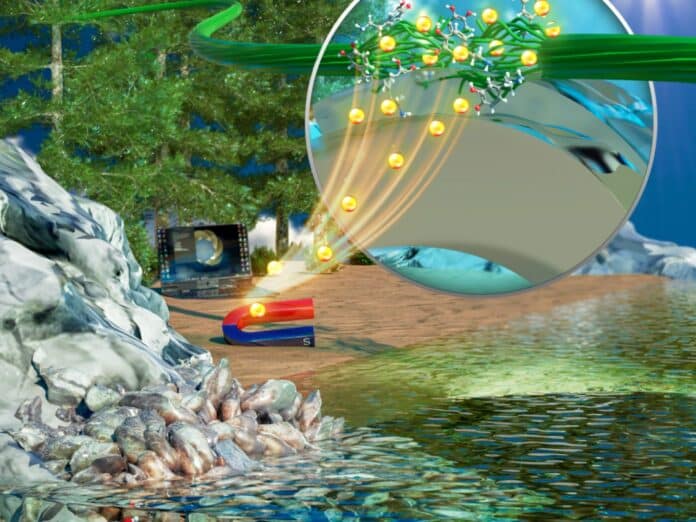Rare earth elements (REE) play a key role in clean energy. It is vital to producing lightweight, efficient batteries and essential components in wind turbines.
Contrarily, traditional methods of extracting these metals cause environmental problems such as habitat destruction, water and air pollution, and the high energy requirements for extracting and processing these elements.
Penn State researchers used mussel stickiness as inspiration to find a solution to this conundrum. Researchers have created a novel mussel-inspired nano cellulose coating (MINC) by imitating this natural adhesive, and it has shown what they term a “remarkable, even surprising” ability to recover REEs from secondary sources like industrial wastewater without consuming a lot of energy.
Mussels can stick to underwater surfaces thanks to the adhesive properties of catechol-based molecules found in mussel proteins. This is mirrored in MINC, which comprises tiny, sticky, hairy cellulose nanocrystals. Dopamine-mediated ad-layer creation is used to apply the MINC to a substrate. The MINC may adhere to various substrates thanks to a chemical reaction that creates a thin coating of molecules on a surface.
Lead author Amir Sheikhi, assistant professor of chemical engineering and biomedical engineering, courtesy, said, “The MINC approach offers a sustainable and eco-friendly alternative to conventional extraction methods, minimizing the environmental footprint and contributing to the long-term availability of critical elements.”
The researchers mainly focused on applying MINC to extract a particular REE, neodymium. However, the “rare” portion of rare earth elements is particularly true for neodymium because there isn’t a ready supply of this essential element, which demands extraction from secondary sources such as recycling industrial wastes. Sheikhi claims that this might be both ineffective and energy-consuming.
The REE is drawn out of the water by the MINC coating, which is to neodymium what a magnet is to iron, even when the element is only present in parts per million.
Sheikhi said, “The challenge in extracting neodymium lies in achieving efficient and selective removal of it at low concentrations. The MINC presented in this study offers improved selectivity and capacity for neodymium removal, overcoming limitations of previous methods.”
“This selectivity allows MINC to avoid recovering undesired elements like sodium and calcium, which would waste time and energy if they had to be filtered to further refine the neodymium.”
“The public and society will benefit from this work through the potential for increased availability of neodymium, a crucial element for not just developing clean energy technologies, but also for creating new medical and electronic devices.”
Scientists are further planning to investigate how the MINC method may work to extract other REEs.
This research advances existing technologies and helps address supply scarcity problems by offering a sustainable and effective approach to neodymium recovery. As a result, there is a greater chance that this technology will one day be applied to additional REE recovery projects.
Journal Reference:
- Shang-Lin Yeh et al., Mussel-Inspired Nanocellulose Coating for Selective Neodymium Recovery, ACS Applied Materials & Interfaces (2023). DOI: 10.1021/acsami.3c04512
